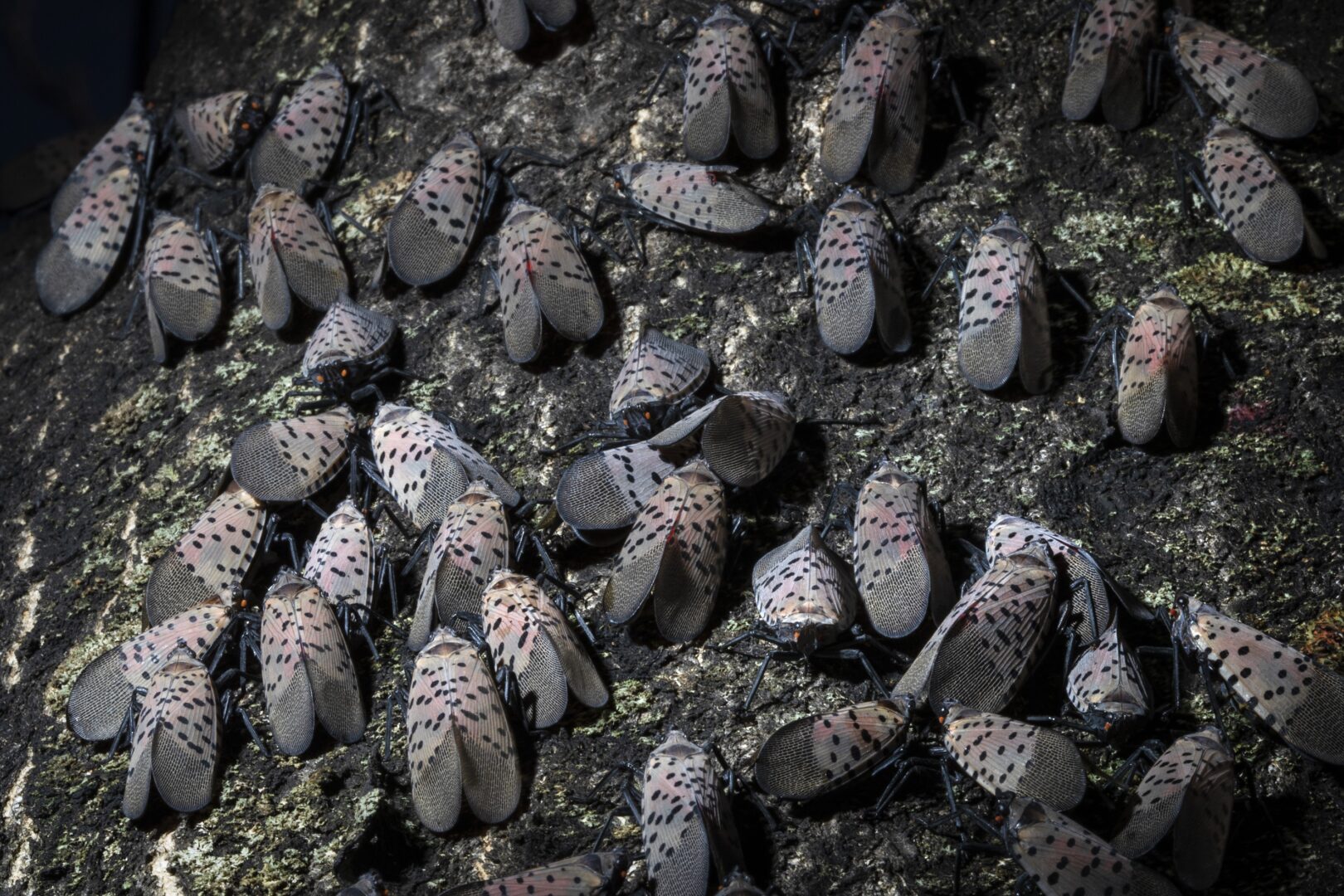
In this Thursday, Sept. 19, 2019, photo, spotted lanternfly gather on a tree in Kutztown.
Matt Rourke / AP Photo

In this Thursday, Sept. 19, 2019, photo, spotted lanternfly gather on a tree in Kutztown.
Matt Rourke / AP Photo

Matt Rourke / AP Photo
In this Thursday, Sept. 19, 2019, photo, spotted lanternfly gather on a tree in Kutztown.
Airdate: August 29th, 2023
Where have all the spotted lanternflies gone? It’s a question many Central Pennsylvanians have been asking this summer. After a few years of seeing overwhelming numbers of the invasive insects, it’s very noticeable there aren’t as many around this year.
Not that they’re missed, but not as many lanternflies makes it feel like an unusual summer. But it is good news for the fruit trees and other plants the lanternflies can damage.
Julie Urban, an associate researcher in entomology at Penn State University was asked on Tuesday’s The Spark why there aren’t as many spotted lanternflies in the central part of Pennsylvania this year,”The short answer is, I don’t know. The longer answer is it’s unlikely (they’re gone). And so we know that spotted lanternfly populations are extremely patchy and that you might have a really high density in one area and a couple of blocks away — not very high at all. And so a colleague of mine likened the spotted lanternfly spread to throwing a stone into a pond. You have this wave that moves out, but then you still get subsequent ripples behind it. And so their populations are patchy. I hope that potentially populations are smaller in eastern Pennsylvania, perhaps due to the governmental control efforts, but also because we’re seeing it spread and we’re seeing really high numbers in newer areas like Pittsburgh in our state and continued high numbers in Manhattan and other places. I don’t want people to let their guard down yet.”
The first spotted lanternfly found in Pennsylvania was discovered in Berks County in 2014. Nine years later, there’s still a lot we don’t know about the insect that is native to Asia.
Urban described one of the unknowns,”I think one of the big questions is how far can they move? We know they’re not great fliers. But does that mean that they can’t get caught up in a thermal and blow pretty far? Or with this constant movement, their feeding, moving, feeding, moving. How far can they really move? And so my concern is that we might be underestimating this true dispersal distance.”
Urban pointed out a researcher in West Virginia is dissecting lanternflies and using DNA to identify the plants they’ve consumed as a way to know where they’re come from.
She also said researchers are studying whether the lanternfly has any natural enemies to keep the population in check.
The days of journalism’s one-way street of simply producing stories for the public have long been over. Now, it’s time to find better ways to interact with you and ensure we meet your high standards of what a credible media organization should be.